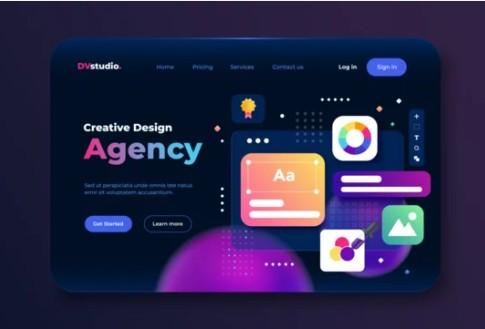Imagine this: you've dedicated countless hours to crafting a visually stunning website. The colors are vibrant, the fonts are perfectly chosen, and each element feels like a warm welcome to your visitors. Yet, the site remains silent. Why? Google's crawlers can't navigate it effectively. That's where SEO and crawlability intersect to enhance your site's visibility. They ensure your site is not only visually appealing but also a magnet for search engines and users. For any web designer or web design agency, mastering crawlability is essential. Let’s explore how to create sites that search engines can’t resist.
The Importance of Crawlability
Crawlability might sound like tech jargon, but it’s quite simple. It refers to how easily search engine bots, such as Google's crawlers, can navigate your site, read its content, and understand its purpose. Imagine your website as a library. If books are scattered without labels, finding anything is difficult. But if everything is organized with clear signage, you're in luck. Crawlability acts as the signage for your digital library.
Why is this important? If crawlers can’t navigate your site, your pages won’t rank. No ranking means no traffic, and no traffic means missed opportunities. So, how do you ensure bots love your site as much as your visitors do?
Designing a Logical Site Structure
The foundation of crawlability is your site’s structure. A well-organized site acts like a map for crawlers, guiding them to what’s important. Flat hierarchies are beneficial here. Instead of burying pages deep within the site, aim for a structure where most pages are just a few clicks from the homepage.
Consider this setup:
- Homepage
- About
- Services
- Web Design
- SEO Consulting
- Blog
- Contact
This structure is easy for bots to navigate. If you're a web designer, sketch your site map before coding. It's like planning a road trip; you need to know the route before you start.
A quick story: I once helped a friend with their site. Their top pages were buried five clicks deep. We simplified the layout, and their traffic soared. A simple structure can truly work wonders!
Utilizing Internal Links
Internal links act as bridges between your pages, guiding crawlers and engaging visitors. They also distribute “link juice,” which boosts page importance.
The key? Link purposefully. Use descriptive anchor text that indicates what’s next. Instead of “click here,” try “explore our web design agency services.” It benefits both bots and users.
Breadcrumb navigation is also valuable. Those little trails (Home > Blog > SEO Tips) enhance user experience and help crawlers understand your site’s layout.
Optimizing Site Speed
Slow websites are frustrating for users and crawlers alike. A sluggish site can deter bots from indexing your pages. Speed is vital for crawlability.
How can you speed up your site? Optimize images for fast loading without compromising quality. Minimize bulky code like CSS and JavaScript. If you're with a web design agency, choose a fast hosting service. Tools like Google’s PageSpeed Insights can identify what’s slowing you down. Address these issues, and bots will navigate your site with ease.
Creating Descriptive URLs
Your URLs are like nametags for your pages. Confusing URLs (e.g., yoursite.com/x=789) are unhelpful. Clear URLs (e.g., yoursite.com/web-designer) benefit both crawlers and users.
Write URLs that are easy for humans to understand. Incorporate keywords like “web designer” where appropriate, but avoid overstuffing. Keep URLs concise and avoid strange codes or symbols.
Implementing XML Sitemaps
An XML sitemap is like a cheat sheet for crawlers, listing all key pages so bots know where to look. It’s like handing Google a menu of your site’s best content.
Creating a sitemap is simple. If you use WordPress, plugins like Yoast can generate one for you. Update it when you add new pages and submit it to Google Search Console. This small step invites crawlers to explore your content.
Prioritizing Mobile Optimization
Crawlers prioritize mobile-friendly sites. Google’s bots assess your site on mobile devices first. If it’s clunky on small screens, you’re at a disadvantage. Responsive design is essential.
Use Google’s Mobile-Friendly Test to evaluate your site. If improvements are needed, adjust your layout. Use flexible designs, intuitive buttons, and responsive images. With the prevalence of mobile browsing, optimizing for mobile is crucial.
Making Content Accessible
Finally, ensure your content is accessible to crawlers. Avoid embedding text in images or Flash files. Use standard HTML tags—like <h1> for titles and <p> for text—to ensure clarity.
To enhance your site, add structured data. It provides crawlers with a summary of your content, highlighting products, reviews, or events. This can even earn you enhanced search results, like star ratings.
Conclusion
Creating a crawler-friendly site isn’t about manipulating the system—it’s about designing a space that’s easy to navigate, fast, and enjoyable. Whether you’re a solo web designer or part of a web design agency, these strategies can transform your site into a digital hotspot. Start with a clear structure, incorporate smart links, optimize speed, and prioritize mobile responsiveness. Use intuitive URLs, a reliable sitemap, and crawler-friendly content, and you’re on your way to success.
So, take a look at your site. Is it a crawler’s paradise or a maze? A few adjustments could elevate your search rankings. There’s nothing like watching your site thrive as visitors flock to it. Time to create some crawlable magic!

